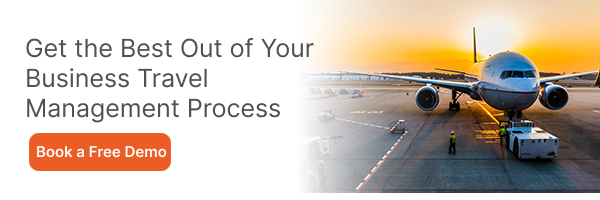
It is without a doubt that travel is an indispensable part of an organization’s success across various industries. In almost every business sector, your employees must go on business trips to meet investors, clients, stakeholders, future partners, etc, who are absolutely necessary to run your business.
However, business travel can take up much of your time and budget. Long and inefficient commutes not only contribute to employee stress and fatigue but also lead to increased operational costs for your organization. And in today’s fast-paced business world, employee productivity and satisfaction are crucial factors for business trip success.
Hence, you must optimize business transport as a business owner and a travel manager. Business transport optimization can yield numerous benefits, including enhanced productivity, reduced turnover, and lower expenses.
In this blog, let us explore the various cost-effective solutions for Business Transport Optimization and help you create a more efficient and employee-friendly workplace.
1. Analyze Commuting Patterns
The first step crucial for business transport optimization is analyzing commuting patterns.
In this process, you should gather data and insights about how your employees commute to and fro from work. This will give you a basic understanding of their travel habits, which will help you identify potential areas of improvement. You can then implement tailor-based methods and solutions to reduce transportation costs and improve convenience for your workforce.
Some of the critical aspects you should look into are:
Employee Locations and Concentration: First, identify where your employees live and the number of employees living there. This information will help you understand if many employees live nearby and if carpooling or shuttle services can be facilitated.
Travel Distance: Find out the average distance of your employees travel to reach the office. If they are staying pretty far, then commuting to and fro daily can be expensive and time-consuming. Address these issues as they may lead to cost leakage and employee dissatisfaction.
Mode of transportation: Next step is to gather data on the various modes of transportation that your employees are leveraging. It could be public transport, shared cabs, car rentals, or walking. When you understand their commute mode, you can tailor your cost-effective solutions.
Commuting Costs: Once you understand the commute mode, calculate the average costs based on their transportation means. This includes expenses related to fuel, public transit passes, parking fees, tolls, and any other relevant expenses.
Employee Preferences: As a travel manager or company owner, you should conduct surveys or hold discussions to gather employee feedback regarding their commuting experiences and preferences. Understanding their needs and concerns will help you design solutions that resonate with them.
2. Plan Ahead
There are multiple ways your company can benefit from long-term strategic corporate travel planning. You should maintain a comprehensive company calendar which includes the details of all the business trips planned for that financial year. This will give you an overview to see when and where your team needs representation. You can then optimize your travel by combining trips if feasible. This may include sending one person to multiple meetings or scheduling close meetings to reduce flight travel costs.
If you have employees frequently traveling, you can leverage big data analytics as you can spend some time analyzing price, traffic, and other trends. You’ll then be able to make better decisions that’ll help you save money. Planning ahead can help you significantly with business transport optimization.
3. Implement Flexible Working Hours
Implementing flexible work hours is an effective approach to optimize business transport and enhance employee satisfaction. This strategy allows employees to adjust their work schedules within certain guidelines, giving them greater control over their daily routines and commute times.
Here’s a detailed explanation of implementing flexible work hours:
Set Clear Guidelines: Establish clear guidelines and policies for flexible work hours. Determine the core hours when all your employees are expected to be present for meetings or collaboration.
Trust And Communication: Ensure you trust your employees to manage their time effectively. Flexible work hours are built on mutual trust and accountability. Encourage open communication and emphasize the importance of meeting work expectations and deadlines, regardless of the chosen schedule.
Offer Multiple Options: Recognize that one size does not fit all. Offer various options for flexible working hours to accommodate different personal and family needs. For instance, some employees might prefer an early morning start to avoid rush hour, while others may need to adjust their schedules to drop off or pick up children from school.
Evaluate Workload And Collaboration: Ensure that the flexible work hours policy does not adversely affect team collaboration or the distribution of workload. You should encourage your employees to coordinate and communicate effectively, especially when working on group projects or tasks that require collective effort.
Monitor Performance And Productivity: Track employee performance and productivity while implementing flexible work hours. Evaluate whether productivity has improved, remained consistent, or declined due to the new schedule arrangements.
Implementing flexible work hours can lead to significant benefits for both your employees and your business. It allows employees to manage their personal and professional lives better, reduces commuting stress, and improves overall job satisfaction. Thus, enhancing your business transport optimization.
4. Encourage Carpooling and Ride-Sharing
Carpooling and ridesharing are both effective ways for business transport optimization. It involves multiple individuals sharing a single vehicle to reach a common destination. While they have similar objectives of reducing individual commuting costs, easing traffic congestion, and lowering the environmental impact, there are some key differences between the two:
Carpooling refers to a group of people living in the same area or with similar commuting routes coming together to share a ride in one vehicle. In most cases, carpooling involves employees from the same workplace or individuals living in close proximity.
Ridesharing, on the other hand, involves a transportation network company (TNC) that connects drivers using their personal vehicles with passengers needing a ride.
5. Explore Alternatives
Some business travels may require specific airport choices, but did you know that opting for flights to regional airports often results in substantial cost savings? Additionally, you’ll benefit from time efficiency due to shorter queues and reduced transportation expenses to and from the airport.
Regarding accommodation, venturing off the typical tourist areas can also bring significant financial advantages. While staying in prestigious locations and popular hotels may have advantages, it might not be worth it if you don’t have any business or specific activities planned there.
Furthermore, smaller companies can often negotiate better deals with hotels of similar size, enabling you to save money in this aspect as well.
Make Employee Commutes Cost-Effective through Business Transport Optimization
Overall, emphasizing the significance of managing your company’s travel expenses cannot be ignored. Failing to address these issues could severely impact not only your financial performance but also the overall efficiency of your organization. By implementing the five tips mentioned earlier, you can ensure business transport optimization that saves both money and time, ensuring that no vital meetings are overlooked.
If you’re seeking a solution to enhance your company’s transportation for business purposes, consider itilite. Itilite is a modern travel management firm that aids businesses in streamlining their travel operations. This includes handling flight and hotel reservations, car rentals, as well as comprehensive financial management. Additionally, you’ll have continuous business travel assistance available around the clock, every day of the year, and access to our powerful travel management software to meet all your business travel requirements.
To know more about our advanced features, contact our experts now!













